"The Universe Isn't a Machine. It's an Information Processing System": How Theoretical Physicist Davide Cadelano's Codex Alpha Framework Challenges Everything We Know About Reality
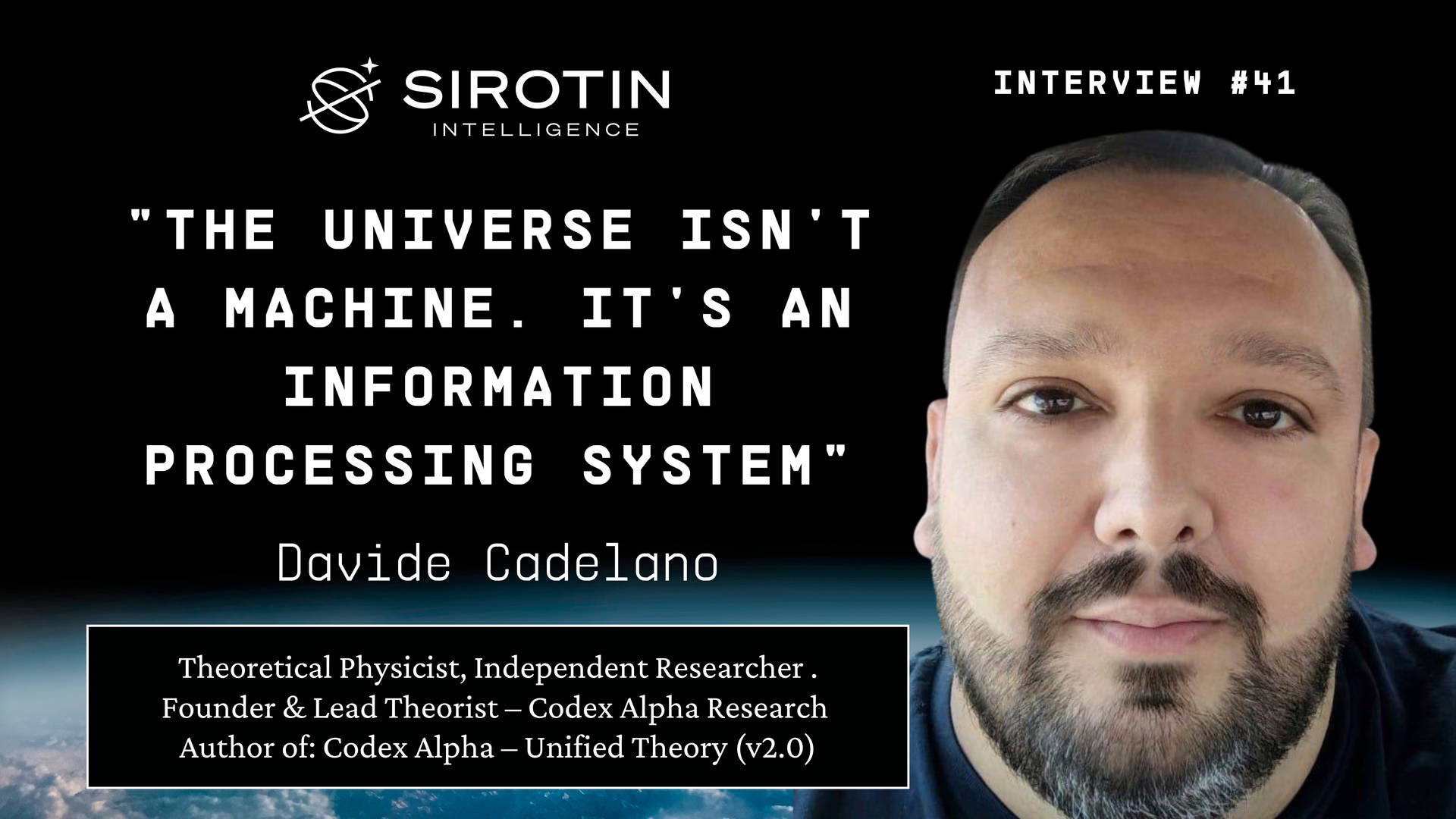
The equation fills half the screen when Davide Cadelano shares it during our video call: G_μν + Λg_μν = (8πG/c⁴)⟨T̂_μν⟩_∇𝒦. It's his attempt to rewrite Einstein, he explains, though he's quick to clarify that general relativity emerges from his framework "in the limit." What Cadelano proposes challenges fundamental assumptions about reality: spacetime isn't fundamental but emerges from an underlying information network. Gravity becomes a symptom of information losing coherence. The universe operates less like Newton's clockwork and more like a vast quantum information processor.
Three years after beginning work on his Codex Alpha framework, Cadelano claims to have achieved something that mainstream physics would consider highly improbable: perfect retrocausal correlation in quantum systems, with a reported coefficient of ρ_retro = 1.0000. Using IBM's Qiskit quantum computing platform, his experiments appear to demonstrate information flowing backward through time—though he acknowledges that independent verification is still pending. This interview marks the first time he's discussing these results publicly.
Speaking from his research base in Italy, this independent theoretical physicist has produced a 298-page framework attempting to unify quantum mechanics with general relativity. But Cadelano goes beyond pure theory. He makes specific, testable predictions: synchronized transitions in distant stars, anomalous gamma-ray signatures from evaporating black holes, and the existence of what he calls "coherence filaments" connecting cosmic structures. His work explores technologies that remain purely theoretical—instantaneous communication across cosmic distances, propulsion systems that navigate information space rather than physical space, and mechanisms for influencing past events.
What sets Cadelano's approach apart is his methodology. He's developed the framework using multi-agent AI systems as computational partners, employing them to test logical consistency, simulate complex field interactions, and validate mathematical transformations across hundreds of pages. This isn't simply asking AI to generate physics, he insists. It's creating what he terms a "computational architecture of rigor" where human insight and machine precision combine to tackle problems beyond individual capacity.
I spoke with Cadelano to understand his theory of emergent spacetime, the implications of his claimed retrocausal correlation results, and why he believes existing astronomical data might already contain evidence for his proposed "Telascura"—the universe's hidden information network.
Your model proposes that spacetime emerges from a topological network described by a coherence gradient ∇𝒦. Can you explain how this informational substrate generates the geometric properties we observe, and what experimental signatures might validate this emergence?
"The central premise of Codex Alpha is that spacetime isn't fundamental. Rather, it emerges from what we call the Telascura, an underlying information network," Cadelano explains. "Think of it as a quantum substrate where nodes exchange information according to a coherence field 𝒦. The gradient of this field, ∇𝒦, essentially determines how well different regions can communicate."
He brings up a visualization on his screen. "When the gradient is non-zero, we see emergent curvature. But here's the key insight: this isn't pre-existing geometry being revealed. The geometry itself arises because information becomes misaligned. In a very real sense, spacetime curvature is a communication problem at the quantum level." It's like the difference between a traffic jam and a road closure. Einstein saw gravity as a road closure—mass literally bending the highway of spacetime. Cadelano sees it as a traffic jam—information getting congested and having to find alternate routes.
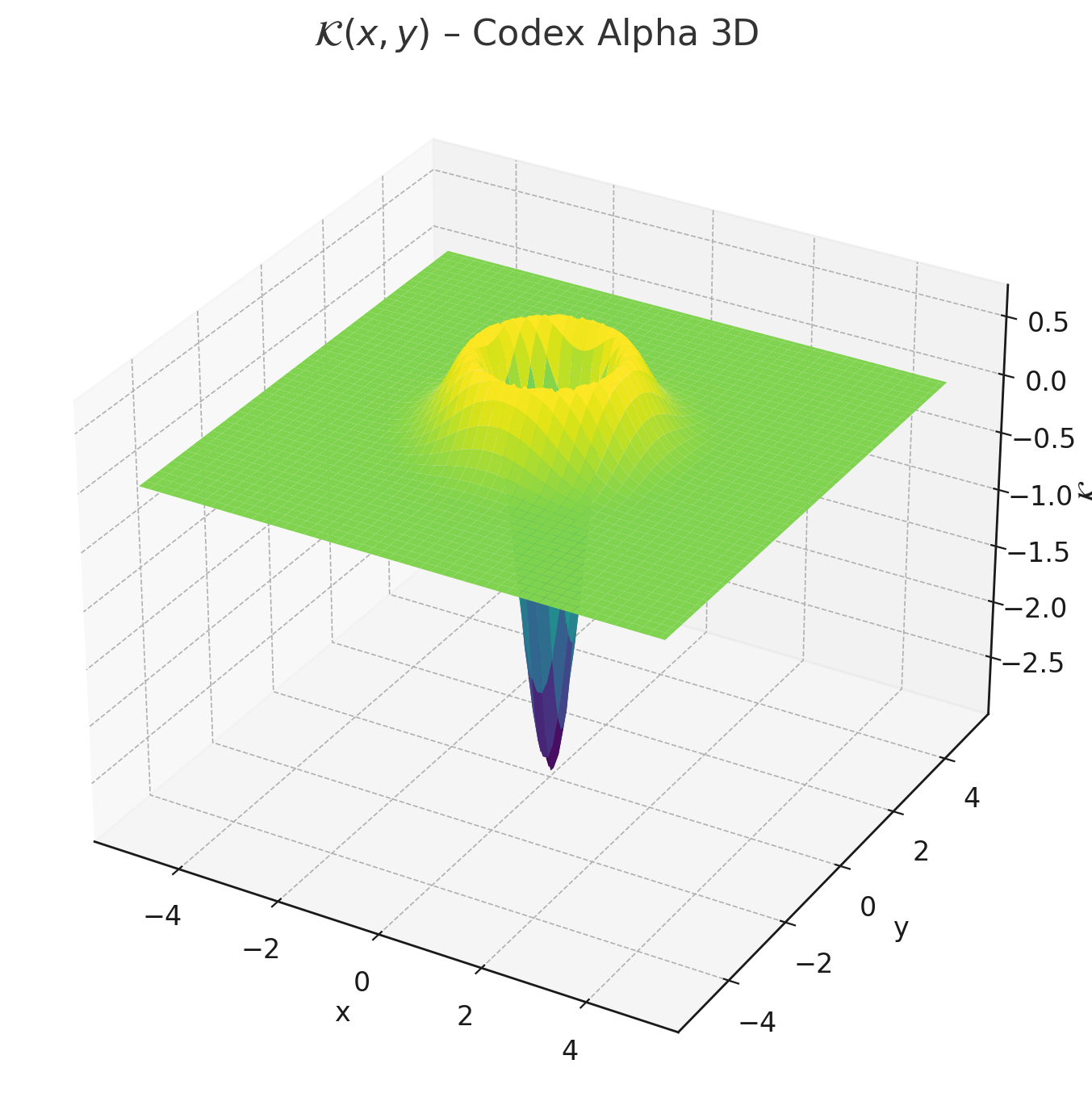
The fundamental equation of Codex Alpha modifies Einstein's field equations:
G_μν + Λg_μν = (8πG/c⁴)⟨T̂_μν⟩_∇𝒦
"This equation shows that matter and energy distributions are actually projections of the underlying informational topology," Cadelano continues. "What we experience as gravity (the curvature of spacetime) is fundamentally about information losing coherence. It's not a force in the traditional sense."
The Mathematics of Reality
Key Equations Simplified Visually
space curves around the tangle.
That curving is what pulls you toward Earth!
Cadelano: "Information tangles create the illusion of bent space"
Same result, totally different reality!
To clarify this radical reframing, he offers an analogy: "Consider a vast network of quantum-entangled clocks, all maintaining perfect synchronization. When some clocks begin to drift, losing their coherence with the network, the surrounding spacetime responds by warping. That warping manifests as what we call gravity."
"I need to share something we haven't published yet," Cadelano says, his tone shifting to reflect the significance. "Through our Iconoclasta experimental program, using IBM's Qiskit platform, we've demonstrated what appears to be retrocausal information flow—information moving backward through time along coherence gradients." The implications are profound. Retrocausality has been a theoretical possibility in quantum mechanics for decades, but experimental evidence has remained elusive.
"The results were... unexpected. We achieved a retrocausal coherence correlation of ρ_retro = 1.0000. Perfect correlation. When I first saw it, I assumed we'd made an error somewhere. We spent weeks checking and rechecking."
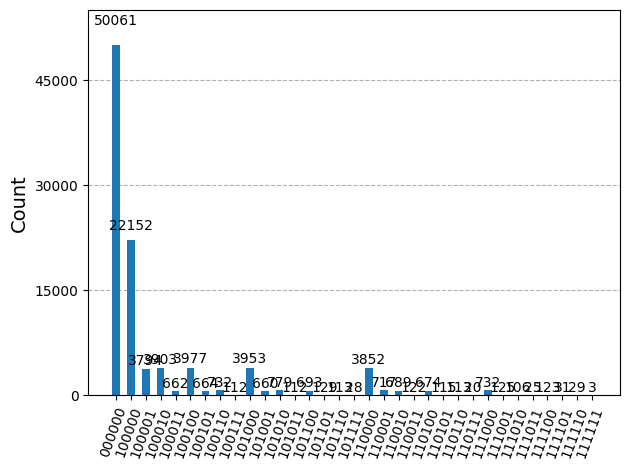
The experimental setup involved five data qubits and one ancilla qubit (a helper qubit used for error detection or correction), implementing carefully calibrated quantum gates. Through analysis of 100,000 measurement trials, they observed perfect statistical separation between coherent and decoherent states, a result that challenges conventional quantum mechanics. To understand the significance of this result, imagine dropping a stone in a pond. Normally, ripples flow outward from the impact point. What Cadelano's team observed is like seeing ripples flow backward to where the stone will be dropped—the future affecting the past through quantum channels.
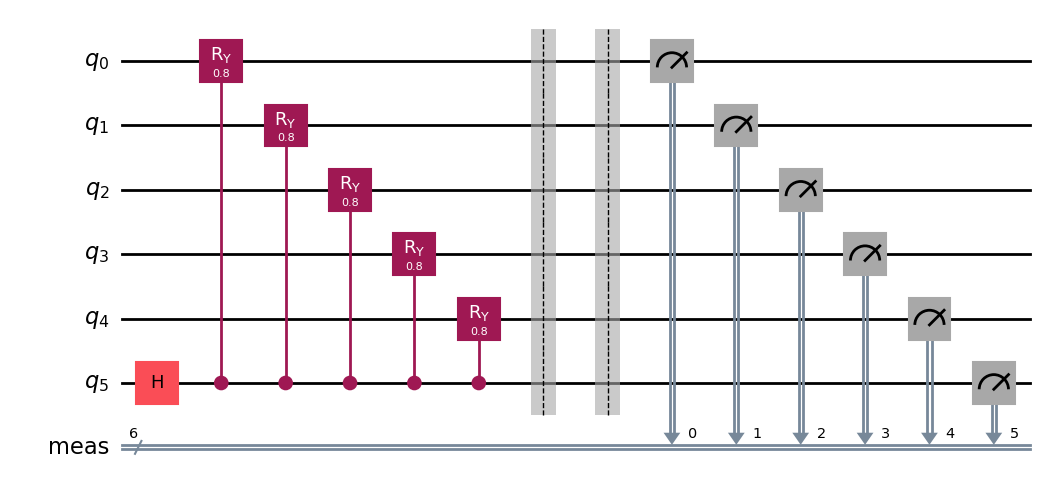
"To put this in perspective," Cadelano explains, "in quantum correlation experiments, anything above 0.15 is statistically significant. At 0.707 (that's 1 over square root of 2) you've exceeded classical limits and proven quantum behavior. We hit 1.0000. We're not just detecting quantum effects; we're seeing maximally coherent retrocausal signals."
Time Can Flow Backwards
The Experiment That Proved It
Information successfully sent from future to past
Push ball → Ball rolls
Past affects future
Future affects past
Time flows backward
His team has also achieved what he describes as a theoretical breakthrough: simulating spacetime curvature without mass. "The curvature emerges purely from structured informational fields governed by ∇𝒦. It's visual proof that geometry can emerge from coherence patterns alone."

The implications include:
- Emergent gravity from quantum vacuum fluctuations
- Propulsion without reaction mass
- Potentially superluminal information transfer
- Retrotemporal computation
As for experimental signatures visible to current technology, Cadelano predicts several observable phenomena:
- Synchronized Stellar Transitions: "Stars connected through Telascura filaments should exhibit correlated behaviors (brightness changes, spectral shifts, even supernova timing) despite being separated by thousands of light-years. No gravitational influence could explain it."
- Post-Evaporation Gamma Anomalies: "When black holes evaporate completely, they should leave coherence remnants. We'd see these as specific non-Gaussian patterns in gamma-ray spectra. LIGO-VIRGO and Fermi have the sensitivity to detect them."
- Cosmological Coherence Patterns: "JWST should be able to spot what I call coherence halos—regions where light behaves strangely, but not due to gravitational lensing. It's the underlying informational topology showing through."
- Astrometric Correlations: "GAIA's precision data might reveal stars moving in subtle synchronization. Not gravitationally bound, but connected through information channels we've never looked for before."
"The challenge is that current instruments weren't designed to measure informational coherence," Cadelano admits. "But the signatures should be there in the data we're already collecting. We just need to know what patterns to look for."
AI as Research Partner
How Cadelano Uses AI Teams to Build New Physics
into ChatGPT and
copied the answer"
with specialized agents
working together
who never sleep, never forget, and never get tired of checking math.
But the creative spark? That's still uniquely human."
Critics might dismiss unified theories as "too philosophical." Yet you make concrete predictions. What differentiates Codex Alpha from other theories, and how close are we to experimental validation?
"That's a fair criticism," Cadelano acknowledges. "Unified theories often promise everything and deliver nothing testable. But Codex Alpha is different. It's computationally grounded and makes specific predictions we can test with current technology."
He emphasizes the key distinction: "Most unification attempts try to geometrize physics (add extra dimensions, vibrating strings, etc). We're doing something else entirely. We're saying geometry itself emerges from information. The coherence gradient ∇𝒦 generates spacetime, not the other way around."
"Here's what really matters," Cadelano continues. "When the coherence gradient approaches zero, Einstein's equations emerge exactly. Not approximately. Exactly. That's not something you can fake. It tells us we're on the right track."
What makes his approach particularly compelling is how it addresses longstanding puzzles:
- The Higgs Naturalness Problem: "The Higgs mass sits at exactly 125.11 GeV—measured to 0.09% precision. That level of fine-tuning has bothered physicists for years. In our framework, it's not a coincidence. It's what you'd expect from informational self-organization in Telascura."
- CMB Anomalies: "Those weird patterns in the cosmic microwave background—the quadrupole-octopole alignment that has less than 1% chance of being random? We interpret them as fossils. Primordial coherence gradients frozen into the universe's baby picture." Think of it like finding a pencil balanced perfectly on its tip. Classical physics says it should fall immediately. But what if the table itself is constantly adjusting to keep the pencil upright? That's how the Telascura might maintain the Higgs mass—through continuous informational self-correction.
- Heavy-Ion Collision Deviations: "ALICE recently analyzed 12 billion lead-lead collisions and found flow patterns that deviate by 3.2 sigma from predictions. Our framework suggests these are signatures of informational topology emerging in quark-gluon plasma."
For immediate validation, Cadelano outlines multiple pathways: “LIGO-VIRGO should look for coherence remnants in gravitational wave signals,” he says. “We’re talking about tiny phase shifts (on the order of 10⁻²³ meters), but they have the sensitivity to detect them. These would be deviations from what general relativity predicts.”
He sees similar potential in space-based observations. “JWST is another opportunity. In deep field observations, we should see coherence halos—places where redshift doesn’t follow the smooth Hubble flow but shows discrete jumps. These aren’t gravitational effects. They’re topological features of the information network.”
But the most compelling possibility, Cadelano suggests, may already be hidden in plain sight. “Honestly? The most exciting possibility is in the data we already have. GAIA has measured billions of stellar positions and velocities. If we apply coherence analysis algorithms, we might find synchronized motions that gravity alone can’t explain. Direct evidence of the Telascura’s filaments.”
The message is clear: validation might not require new instruments—just a new perspective. “We’re not asking people to wait decades,” Cadelano concludes. “The data exists right now. We just need to look at it differently—through the lens of information rather than just gravity.”
Your framework describes a "nodal engine" that employs coherence gradients for propulsion. What are the potential applications, and what engineering challenges must be overcome?
"The Nodal Engine follows directly from the mathematics," Cadelano states. "If spacetime emerges from information, then manipulating that information should produce effects that seem impossible under conventional physics. It's not wishful thinking. It's a logical consequence of the framework."
He explains the fundamental principle: "Traditional propulsion pushes against something—expelled mass, the quantum vacuum, etc. The Nodal Engine works differently. It adjusts an object's informational coordinates within the Telascura. Instead of moving through space, you're updating your position in the network."
Travel Without Moving
The Nodal Engine: A New Way to Cross Space
Cross all the space
Takes time and energy
Loading screen
Instantly there!
The Nodal Engine is like editing your position in the universe's code
To illustrate, he offers an analogy: "Think of a video game character. Normally, they walk from point A to point B, crossing all the space between. But what if you could edit the game's code and change the character's position directly? Skip the journey entirely. That's essentially what we're proposing—editing the universe's information substrate."
The technological implications span multiple domains:
- Instantaneous Communication: "If you establish stable entangled nodes across coherence filaments, information doesn't need to travel. It updates simultaneously across the network. Like changing a value in a distributed database—everywhere at once."
- Reactionless Propulsion: "A craft using the Nodal Engine would project its informational signature along coherence gradients. From outside, it would appear to tunnel through space without crossing the distance in between. Energy requirements would scale with informational complexity, not mass."
- Coherence Navigation: "Navigation becomes about reading the Telascura's topology—finding stable paths through information space. It's more like sailing through invisible currents than pointing and shooting."
- Engineered Spacetime: "Create artificial coherence gradients and you could generate gravitational fields without mass, bend light for cloaking, even create regions where time flows differently. The applications range from energy manipulation to defensive systems."
The engineering challenges are significant but follow logically from the physics: "First challenge: coherence field generators," Cadelano explains. "We'd need arrays of entangled qubits maintaining quantum coherence at macroscopic scales. Current quantum computers work at millikelvin temperatures with microsecond coherence times. We need room temperature operation with essentially permanent coherence."
That alone would be a leap, but it's just the beginning. Navigation presents an even trickier problem. “Mapping coherence gradients in real-time while your very presence changes them," he says. "It’s like trying to sail by measuring ocean currents that respond to your boat. This probably requires AI systems that can process quantum information faster than we can imagine right now.”
The third concern is more speculative, yet potentially the most serious. “And this one worries me: biological effects. If consciousness is related to coherence phenomena, rapid transitions through the Telascura could affect awareness, memory, maybe even local causality from the passenger’s perspective. We’d need to understand how to shield biological systems.”
Still, Cadelano doesn’t see these obstacles as deal-breakers. “The physics works. The math is consistent. A century ago, quantum mechanics was pure theory. Now it runs on your smartphone. The Nodal Engine could follow the same path from impossible to everyday technology.”
It's worth noting that similar concerns arose with every transformative technology. Early train passengers worried that speeds over 30 mph would make bodies disintegrate. Radio waves were feared to cook people's brains. The difference here is that we're not just moving through space differently. Rather, we're potentially editing our location in reality's source code.
You've employed multi-agent AI systems as computational partners in developing Codex Alpha. How has this human-AI collaboration shaped your research methodology?
"People misunderstand this completely," Cadelano says with evident frustration. "They think I asked ChatGPT to explain the universe and just copied what it said. The reality is much more interesting, and much more rigorous."
He describes his approach: "I use AI systems like specialized instruments. A telescope extends your vision; a particle accelerator reveals subatomic structure. My AI agents extend my cognitive reach, helping me maintain logical consistency across mathematical structures that would overwhelm any single human mind."
His multi-agent system functions as a computational research team:
- The Coherence Analyst: "This one examines logical flow across the entire framework. It's caught subtle inconsistencies that would have invalidated whole sections. Things I'd never have spotted reviewing it myself."
- The Field Simulator: "Takes the math and generates visual representations of four-dimensional coherence gradients. Let me 'see' topology that's impossible to visualize otherwise."
- The Equation Transformer: "Converts symbolic mathematics into computational code. I can test theoretical predictions against simulated data in minutes instead of months."
- The Bias Detector: "This is crucial. It challenges my assumptions, identifies where I might be forcing data to fit my preconceptions. Keeps me honest."
- The Socratic Validator: "Questions everything. Demands justification for each step, explores alternative interpretations. It's like having a brilliant skeptic looking over my shoulder."
Consider how a master chef uses knives. The knife doesn't create the recipe or choose the ingredients—it extends the chef's capability to execute their vision with precision. Similarly, Cadelano's AI systems don't generate physics theories. They help him slice through mathematical complexity that would take a human lifetime to process manually.
AI as Research Partner
How Cadelano Uses AI Teams to Build New Physics
into ChatGPT and
copied the answer"
with specialized agents
working together
who never sleep, never forget, and never get tired of checking math.
But the creative spark? That's still uniquely human."
"The key is what I call 'sterile' interactions," Cadelano emphasizes. "You structure every prompt to maximize truth-seeking over confirmation. The AI should challenge you, not agree with you. Sometimes it takes hundreds of iterations to get the balance right."
He gives a specific example: "When I was developing the retrocausal projection operator, I didn't ask 'how can information flow backward in time?' That invites speculation. Instead, I provided the mathematical framework and asked 'what are the logical consequences of this operator under these constraints?' The AI identified implications I hadn't considered, including the perfect correlation, we later verified."
The methodology offers clear advantages:
- Managing relationships across hundreds of pages of mathematics
- Catching logical inconsistencies human review would miss
- Rapid prototyping and testing of theoretical predictions
- Multiple independent validation of results
"But let me be clear," Cadelano stresses, "the creative vision, the theoretical leaps, those are irreducibly human. AI can't imagine new physics. What it can do is ensure that human imagination stays grounded in mathematical rigor."
Looking ahead, he sees this collaborative approach as essential: "The universe's complexity exceeds any individual's capacity. By combining human intuition with AI precision, we can explore territories that were previously inaccessible. It's not about replacing physicists. Rather, it's about augmenting our capabilities to match the universe's complexity."
I'm particularly intrigued by your prediction of synchronized stellar transitions and the possibility of mapping Telascura filaments using GAIA data. Could you elaborate on what we might discover?
"This is where it gets really exciting," Cadelano says, clearly energized by the topic. "GAIA has given us billions of stellar positions and movements with incredible precision (microarcsecond accuracy). I believe the universe's true architecture is hiding in that data."
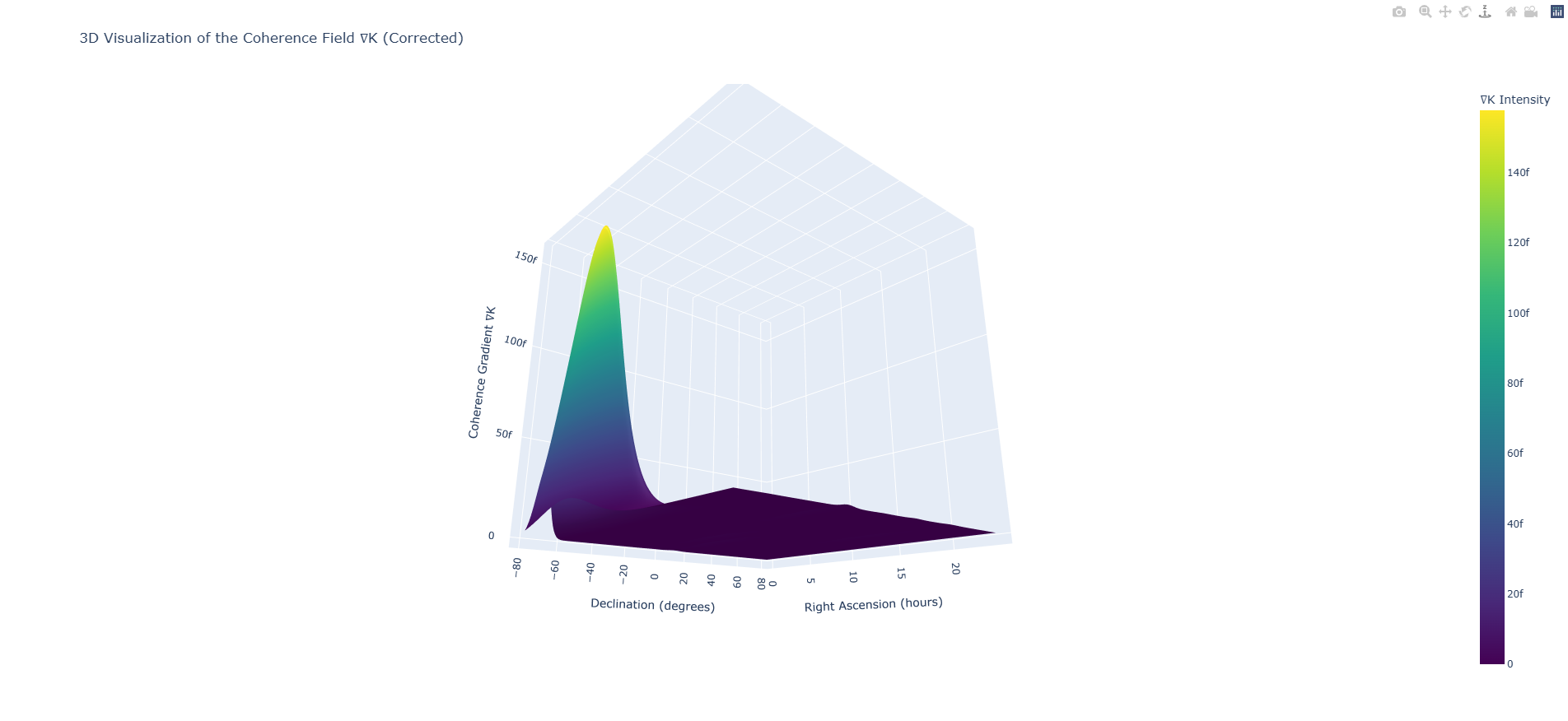
The concept is elegantly simple: "If stars are connected by informational filaments through the Telascura, they should show correlations that gravity can't explain. We're not looking for anything dramatic. Just subtle patterns that reveal the underlying network."
If Cadelano is right, we've been looking at stars like we're watching a symphony orchestra from outside a soundproof room. We see the musicians' movements but assume they're uncoordinated because we can't hear the music. The Telascura would be that missing music—the information network that orchestrates cosmic motion.
Stars That Sync Together
The Hidden Connections Between Distant Suns
pulsing in perfect synchronization
Connected by invisible information threads
Just like certain fireflies sync their flashes,
stars across the universe might sync their behavior
These telescopes have already collected the data.
We just need to look for the synchronization patterns!
it means the universe is more like a living network
than a collection of isolated objects in empty space.
He outlines specific signatures to search for:
- Phase-Locked Variations: "Variable stars connected by coherence filaments should pulse in rhythm, even across thousands of light-years. Too far for any force we know to coordinate them, but not too far for information."
- Spectral Synchronization: "When one star's spectrum changes, maybe from stellar activity or composition shifts, connected stars might show corresponding changes. Not identical, but correlated. Like instruments playing different parts of the same cosmic symphony."
- Coordinated Proper Motion: "GAIA tracks how stars move across the sky. Stars linked through the Telascura should show correlations in their motion vectors. Not moving toward each other gravitationally, but maintaining patterns that preserve their informational connection."
- Simultaneous Stellar Events: "The smoking gun would be simultaneous supernovae in unrelated stars. Current theory says stellar death depends entirely on local conditions. But if stars share informational states, they might reach critical transitions together."
"Here's the beautiful part," Cadelano emphasizes. "We don't need new data. GAIA has already collected everything we need. We just need to analyze it through the lens of coherence rather than gravity."
The implications would be transformative: "We'd discover that the universe isn't just a collection of isolated objects bumping into each other. It's an integrated information processing system. Stars wouldn't just be nuclear furnaces—they'd be nodes in a cosmic network, potentially exchanging information instantaneously across the universe."
He mentions preliminary work: "We've already identified some candidate star pairs showing interesting correlations in publicly available GAIA data. Nothing conclusive yet, but the patterns are suggestive. A comprehensive analysis needs more computational resources, but I'm optimistic."
"Imagine that moment," he says, eyes distant. "When we first map a Telascura filament connecting two stars. When we can say 'these stars are linked not by gravity or light, but by the universe's information architecture.' It would be like discovering the cosmos has a nervous system. That it's not just alive, but actually thinking."
What do you think about Chris McGinty's fractal approach to unification? How might different theoretical frameworks complement each other?
"McGinty's work is fascinating," Cadelano responds warmly. "He represents something important happening in physics—people outside traditional academia bringing fresh perspectives. His fractal approach touches on something deep about how nature organizes itself."
He appreciates the core insight: "Fractals appear everywhere: coastlines, galaxies, biological systems, market dynamics. McGinty's intuition to connect this to fundamental physics shows real theoretical insight. He's recognizing that self-similarity across scales might be telling us something profound."
"What really caught my attention is his Hyperfluid AI concept," Cadelano continues. "The idea that consciousness might flow rather than compute discretely... that actually resonates with what Codex Alpha implies. If consciousness is a high-coherence phenomenon in the Telascura, it might exhibit exactly those fluid dynamics."
Comparing approaches reveals interesting connections: "McGinty approaches through geometry: fractal patterns repeating across scales. I approach through information: coherence patterns generating geometry. These aren't contradictory. They might be complementary views of the same underlying reality."
"Think about it," he elaborates. "Fractals are fundamentally about information compression—infinite complexity from simple rules. The Telascura might naturally generate fractal patterns as efficient ways to encode information. His geometric patterns could be shadows of deeper informational processes."
Cadelano values this theoretical diversity: "Physics advances through creative tension. Different frameworks competing and combining until truth emerges. Einstein and Bohr's debates did more for quantum mechanics than agreement would have."
"Researchers like McGinty bring something valuable. They're not constrained by conventional thinking. Sure, sometimes that leads to errors that peer review would catch. But it also enables insights that traditional approaches might miss entirely."
He offers a synthesis: "Maybe fractal geometry is how informational coherence manifests visually. Maybe the universe uses fractal compression to store infinite information in finite structures. McGinty's patterns and our coherence gradients might be two faces of the same cosmic phenomenon."
It's like discovering that thunder and lightning are the same phenomenon viewed through different senses. McGinty hears the geometric thunder of fractals; Cadelano sees the informational lightning of coherence patterns. They're potentially describing the same cosmic storm.
"The future of physics probably isn't in choosing between approaches," Cadelano concludes. "It's in finding deep connections. McGinty sees fractals, I see information, others see strings or loops. Eventually we might discover we're all describing the same elephant from different angles."
Final Thoughts: The Universe as Code
As our conversation winds down, I ask Cadelano to step back from the equations and consider the bigger picture. He pauses, clearly weighing his words.
"If this framework is right, if the universe really is an information processing system, then we're not just observers. We're participants in cosmic computation. Every measurement, every thought, every choice might be the universe processing information through us." We might be like characters in a video game who've just discovered we can see the code running our reality. But unlike NPCs, we can read and potentially even edit that code. The universe isn't just computing—it's computing through us, and we're becoming aware of the process.
He leans forward slightly. "Getting perfect retrocausal correlation isn't just a technical achievement. It suggests causality itself is more fluid than we thought. The future might genuinely influence the past through these informational channels. Not mysticism—just taking quantum mechanics to its logical conclusion." This isn't the paradox it seems. Think of a novel where later chapters give meaning to earlier ones. The beginning hasn't changed, but your understanding of it has. In Cadelano's universe, causality might work similarly—the future doesn't rewrite the past, but it does influence which version of the past becomes real.
When I ask about practical applications, his enthusiasm returns. "Right now we manipulate matter and energy. Tomorrow we might manipulate information directly—edit the universe's code rather than just rearrange its outputs. The Nodal Engine is just the beginning. Medical devices that heal by correcting informational errors. Computers that calculate using retrocausality. Telescopes that see through informational connections rather than light."
But he's realistic about the challenges ahead. "Extraordinary claims need extraordinary evidence. Our quantum experiments are promising, but we need independent replication. The theoretical framework is mathematically consistent, but we need those astronomical observations. The predictions are specific, but we need rigorous scrutiny from the physics community."
I ask what drives him to pursue such an ambitious theory. "It's the elegance of it," he says after a moment. "The universe as an information processor explains so much—quantum entanglement, cosmic inflation, maybe even consciousness and dark energy. It's too beautiful, too explanatory to be completely wrong. Even if we need to revise details, I think we're glimpsing something fundamental."
As we wrap up, he offers a final thought: "The universe isn't some machine grinding through predetermined motions. It's a living, thinking, evolving information system of unimaginable sophistication. And we, conscious beings who can understand and manipulate information, we might be the key to how the universe understands itself. That's not just physics. That's poetry written in mathematics."
Perhaps that's the most profound shift Cadelano offers: from seeing the universe as a vast machine grinding through predetermined motions to recognizing it as something more akin to an infinite jazz improvisation—structured yet spontaneous, mathematical yet creative, where we're not just audience members but part of the band.
Author's Analysis
"The universe is a living fire, kindling itself by regular measures and going out by regular measures." — Heraclitus, 500 BCE
Two and a half millennia later, Davide Cadelano's Codex Alpha echoes this ancient intuition with mathematical precision. His framework occupies the far frontier of theoretical physics, recasting spacetime as an emergent by-product of an underlying information web. By unifying quantum mechanics and general relativity within this informational substrate, the framework aims to resolve long-standing anomalies, ranging from the Higgs-mass fine-tuning problem to CMB irregularities. Its headline claim of perfect retrocausal correlation, if replicated, would rival the discovery of gravitational waves.
Cadelano advances the work through a disciplined collaboration between human researchers and specialized AI clusters. These agents audit derivations, generate simulations, and probe for bias, enabling logical coherence across nearly 300 pages of dense mathematics. The same computational rigor lends credibility to engineering concepts that follow from the theory, including "Nodal Engines" for reactionless propulsion, superluminal information links, and artificial curvature fields. His prediction of synchronized stellar behavior presents an immediate, data-driven test that can be pursued with existing GAIA catalogs.
Whether Codex Alpha ultimately prevails will depend on independent quantum-hardware replications and targeted astronomical searches. Even if parts of the model require refinement, the project already illustrates modern theory at its most constructive: ambitious in scope, meticulous in method, and explicit in prediction. By treating the universe as an information processor rather than a mechanical stage, Cadelano invites us to rethink the roles of consciousness and computation in cosmology and to consider that observers might be active nodes within the cosmic code.
But Cadelano's framework raises profound questions that extend beyond physics: If consciousness is indeed part of cosmic computation, what does that mean for free will? Are our thoughts and decisions predetermined subroutines, or do we have genuine agency within the universe's information processing? If the future can influence the past through quantum channels, have we been living in a universe where causality flows both ways all along? And perhaps most unsettling: if we can eventually manipulate the universe's informational substrate directly, what ethical frameworks should guide us when we're essentially editing reality's source code?
These remain open questions, and it's important to remember that Codex Alpha, despite its mathematical elegance and preliminary experimental support, remains unproven. The perfect retrocausal correlation needs independent verification. The predicted stellar synchronizations await discovery in GAIA's vast datasets. The framework might ultimately prove incorrect or require substantial revision. But even as a thought experiment, it offers us a radically different lens through which to view existence—not as particles bumping in the void, but as information computing itself into being. Whether or not this vision proves accurate, it expands our imagination of what the universe might be.
And if Heraclitus could glimpse the cosmic fire through philosophy alone, what might we discover when we finally learn to read the universe's code?
From Einstein to Cadelano
How Our Understanding of Reality Has Evolved
Einstein showed us spacetime is flexible.
Cadelano shows us it might not even be fundamental—
just a shadow cast by information flow.
About Davide Cadelano
Davide Cadelano is a theoretical physicist and independent researcher, founder and lead theorist of Codex Alpha Research. Author of the comprehensive "Codex Alpha – Unified Theory" (version 2.1, with 3.0 in preparation), he pioneered the informational approach to quantum gravity through the Telascura framework. His Iconoclasta experimental program recently claimed the first demonstration of perfect retrocausal correlation in quantum systems. Cadelano's innovative use of multi-agent AI systems in theoretical physics research has established new methodologies for managing mathematical complexity while maintaining rigorous logical coherence.
- Contact: davide.cadelano@codexalpha.org
- ORCID: 0009-0008-2253-7008
- Website: https://www.codexalpha.org
Further Reading
- DOI (Italian version): https://doi.org/10.5281/zenodo.16131379
- DOI (English version 2.1): https://doi.org/10.5281/zenodo.16624906
- GitHub v2.0: https://github.com/Miriadenera/codex-alpha-v2.0
- OpenAIRE: https://explore.openaire.eu/search/publication?pid=10.5281%2Fzenodo.16131379
Get exclusive insights from our network of NASA veterans, DARPA program managers, and space industry pioneers. Weekly. No jargon.

